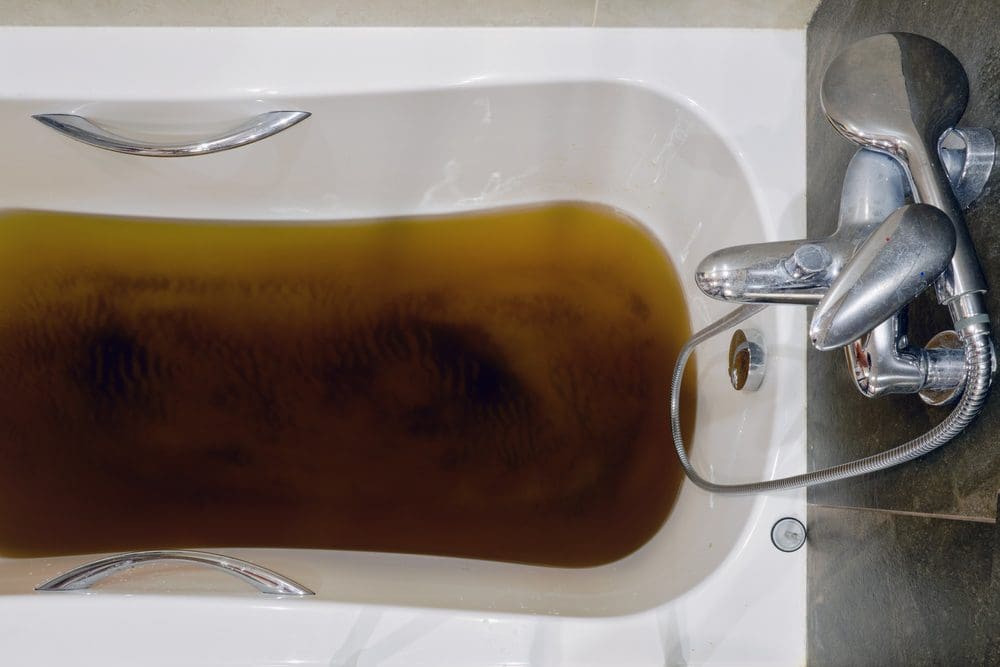Top Reasons Behind Waste Backflow in the Bathtub
Top Reasons Behind Waste Backflow in the Bathtub
Blog Article
The publisher is making a few great pointers related to Why is Sewage Backing Up Into My Bathtub? in general in this content underneath.

Sewer backup in the bath tub can be a traumatic and unhygienic issue for any home owner. Not just is it bothersome, yet it likewise positions serious wellness threats and suggests underlying concerns with the plumbing system. Recognizing why sewage is turning up through the tub is crucial for taking appropriate action to deal with the trouble properly.
Intro to the Concern
Understanding the Issue
When sewer starts backing up into the bathtub, it's a clear indicator of a problem with the water drainage system. The wastewater that must be flowing away from your home is rather locating its back right into your living space, which can lead to substantial damage and carcinogen.
Prospective Causes
Numerous elements can add to sewer backup in the tub. From obstructions in the sewage system line to concerns with the plumbing facilities, recognizing the root cause is vital for locating a service.
Common Reasons for Sewage Backup
Clogs in the Sewage System Line
One of the most typical causes of sewage backup is a clog in the sewage system line. This can happen because of the build-up of debris, grease, or international items in the pipelines, protecting against appropriate flow and triggering sewage to support into your tub.
Tree Root Intrusion
Tree roots looking for dampness and nutrients can infiltrate drain lines with small cracks or joints. Gradually, these origins can expand and expand, causing significant damages to the pipelines and bring about sewage backup problems.
Aging Framework
Older homes might have outdated plumbing systems that are more susceptible to rust, cracks, and damage. As pipes age, they come to be much more vulnerable to leakages and obstructions, enhancing the likelihood of sewer back-up incidents.
Heavy Rainfall or Flooding
During durations of heavy rainfall or flooding, the sewer system may come to be overloaded with excess water, creating back-ups and overflows. This can result in sewage backing up into bath tubs and various other fixtures inside the home.
Health And Wellness Risks Connected With Sewage Back-up
Contamination of Water
Sewage back-up can pollute the supply of water in your house, posturing a major health and wellness risk to you and your family members. Direct exposure to infected water can lead to stomach issues, skin infections, and other diseases.
Spread of Illness
Sewage contains dangerous microorganisms, viruses, and bloodsuckers that can trigger a range of conditions, consisting of liver disease, cholera, and gastroenteritis. Coming into contact with sewer or infected surface areas puts you in danger of infection.
Mold Development
Dampness from sewage backup can develop excellent conditions for mold development in your house. Mold spores can aggravate respiratory issues and trigger allergic reactions in sensitive people, making punctual cleaning essential.
Indicators of Sewer Backup
Foul Odors
Undesirable odors originating from drains pipes or fixtures, especially in the restroom, may indicate sewage backup concerns. These odors are frequently strong and consistent, signaling a trouble that requires prompt focus.
Slow Draining Fixtures
Bathtubs, sinks, and bathrooms that drain pipes gradually or otherwise whatsoever could be experiencing sewage back-up. If numerous fixtures are influenced all at once, it's most likely that the problem originates from an usual factor, such as the primary drain line.
Gurgling Sounds
Odd gurgling or gurgling noises coming from drains when water is running in other places in your house are indicative of air entraped in the plumbing system. This air build-up can result from sewage backup and must be checked out quickly.
Immediate Actions to Take
Turning Off Water Supply
In the event of sewage backup, it's important to shut off the water system to stop additional contamination and damage. Situate the major water shutoff valve in your home and shut it off until the problem can be fixed.
Contacting a Specialist Plumber
Taking care of sewage back-up is not a do it yourself task. Call an accredited plumber with experience in taking care of sewage-related issues to assess the scenario and do required repair work or clean-ups.
Avoiding Contact with Contaminated Water
Until the sewage backup is fixed, avoid contact with polluted water to prevent the spread of microorganisms and virus. Put on safety equipment if you need to be in the afflicted location and wash your hands completely later.
Safety nets
Normal Upkeep of Drain Lines
Set up routine assessments and maintenance of your sewer lines to determine and deal with potential problems before they rise right into significant problems. This can include cleaning out debris, evaluating for tree origin invasion, and fixing any kind of damaged pipelines.
Installing Backwater Valves
Consider mounting backwater shutoffs in your plumbing system to stop sewage from receding right into your home during periods of heavy rainfall or flooding. These shutoffs automatically close when water draws back up, safeguarding your residential property from contamination.
Appropriate Disposal of Household Waste
Avoid flushing anything besides toilet paper and human waste down the commode to avoid clogs and blockages in the sewage system line. Dispose of grease, oil, and other family chemicals effectively to lessen the danger of plumbing issues.
Tidying up After Sewer Backup
Sanitation Procedures
Completely disinfect and disinfect impacted areas after sewage backup to eliminate hazardous germs and protect against mold development. Usage suitable cleansing products and protective gear to make certain secure and efficient cleanup.
Remediation of Impacted Locations
Fix any damages to flooring, wall surfaces, or fixtures triggered by sewer back-up. Depending upon the level of the damages, you may need to change carpeting, drywall, or various other products to recover your home to its pre-loss problem.
Why is there sewage coming up from my bathtub?
These gas fumes, like hydrogen sulfide – the gas that leaves a rotten egg smell in its wake and is highly flammable and toxic – can be hazardous to your health. Sewage poses major health risks as it contains harmful bacteria and microorganisms that can be dangerous if exposed to them.
Sewage cleanup should be considered an emergency.
So, why is there sewage coming up from your bathroom? There are several common causes of a sewage backup.
The most common reason for sewage coming up through your bathroom is a clogged sewer line. All plumbing in your bathroom connects to a single drain pipe that leads to the sewer line under your house. This drain line carries all wastewater and sewage away from your home to the city’s sewer system.
When the sewer line becomes clogged or blocked, wastewater has nowhere to go but back toward your house. This results in sewage coming up through your drains, often starting with your tub or shower.
Another culprit may be the sewage ejector pump, which is used when a bathroom, laundry room or any other type of plumbing fixture is located below the level of the main sewer or septic line flowing from the house. Most commonly, ejector pumps are used in homes with basement bathrooms or laundry rooms.
When you experience sewage coming up through your bathtub, it’s always best to contact a professional. Attempts to fix a clogged sewer line without experience often lead to more plumbing damage.
Make sure that no one enters the affected area, and open as many windows as possible. Pre-treat the flooded area with small splashes of chlorine bleach. Wear protection gear like rubber gloves, a mask, and water-resistant coveralls.
https://www.shawlocal.com/the-herald-news/sponsored/2022/08/17/omega-plumbing-10199038/

I am very involved in What to Do if Sewage Starts Coming Up Through Your Bathtub and I hope you liked our page. Sharing is good. Helping others is fun. Many thanks for your time. Come back soon.
Estimate
Report this page